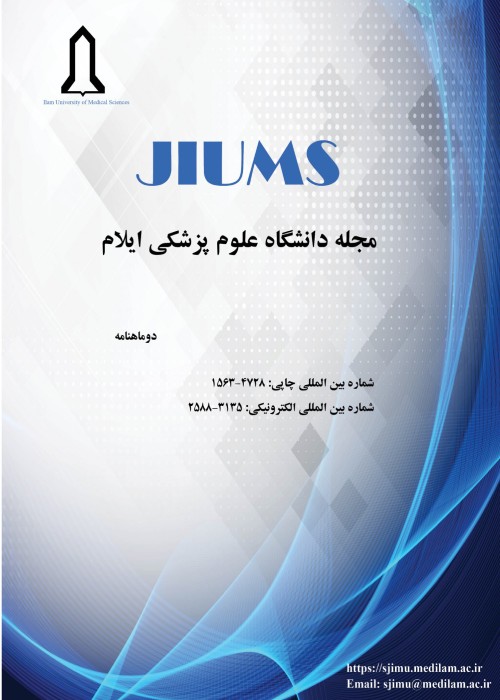The Effect of Training Type on Hepatic Gene expressions of Apolipoprotein A‐I, and Apolipoprotein A‐II among Male Wistar Rats
Author(s):
Article Type:
Research/Original Article (دارای رتبه معتبر)
Abstract:
Introdaction
Lipid metabolism disorders, especially raised levels of cholesterol and triglycerides increases the risk of atherosclerosis. This study aimed to investigate the effect of training type including submaximal continuous and high-intensity interval training on hepatic gene expression of Apolipoprotein A‐I, and Apolipoprotein A‐II in male Wistar rats.
Materials & Methods
This experimental study conducted on 24 male Wistar rats with 8 weeks of age and weight range of 200-250 g. They were randomly assigned into three groups of control (n=8), high-intensity interval training (n=8), and continuous submaximal training (n=8). High-intensity interval training protocol included 30-min interval running 3 days a week for 8 weeks (each interval took 4 min with 85-90% of VO2max and 2-min active recovery with 50-60% of VO2max). In addition, submaximal continuous training group (30-60 min) was subjected to 50-55% intensity activity with maximum oxygen consumption. Finally, gene expressions of Apolipoprotein A‐I and Apolipoprotein A‐II were measured in this study.Ethics code: IR.SSRI.REC. 1396, 134.
Findings
The findings of this study showed an increase in the gene expressions of Apolipoprotein A‐I in the high-intensity interval (P=0.034) and continuous submaximal training groups (P=0.047), compared to the control group. Moreover, the results of the Bonferroni post-hoc test showed that there was no difference between high-intensity interval and continuous submaximal training groups (P=0.9). In addition, the results of this study showed that there was no significant difference among the three groups in terms of the gene expression of Apolipoprotein A‐II.
Discussion & Conclusions
High-intensity interval and continuous submaximal training can play important roles in reducing cardiovascular disease risks, such as atherosclerosis. This is done by increasing hepatic gene expression of Apolipoprotein A‐I and the main factor taking cholesterol from the liver and ultimately the high-density lipoprotein receptor.Keywords:
Language:
Persian
Published:
Ilam University of Medical Science, Volume:27 Issue: 2, 2019
Pages:
30 to 40
magiran.com/p2004685
دانلود و مطالعه متن این مقاله با یکی از روشهای زیر امکان پذیر است:
اشتراک شخصی
با عضویت و پرداخت آنلاین حق اشتراک یکساله به مبلغ 1,390,000ريال میتوانید 70 عنوان مطلب دانلود کنید!
اشتراک سازمانی
به کتابخانه دانشگاه یا محل کار خود پیشنهاد کنید تا اشتراک سازمانی این پایگاه را برای دسترسی نامحدود همه کاربران به متن مطالب تهیه نمایند!
توجه!
- حق عضویت دریافتی صرف حمایت از نشریات عضو و نگهداری، تکمیل و توسعه مگیران میشود.
- پرداخت حق اشتراک و دانلود مقالات اجازه بازنشر آن در سایر رسانههای چاپی و دیجیتال را به کاربر نمیدهد.
دسترسی سراسری کاربران دانشگاه پیام نور!
اعضای هیئت علمی و دانشجویان دانشگاه پیام نور در سراسر کشور، در صورت ثبت نام با ایمیل دانشگاهی، تا پایان فروردین ماه 1403 به مقالات سایت دسترسی خواهند داشت!
In order to view content subscription is required
Personal subscription
Subscribe magiran.com for 70 € euros via PayPal and download 70 articles during a year.
Organization subscription
Please contact us to subscribe your university or library for unlimited access!



